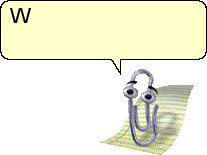The Future of Social Engineering: Cheating AIs, Compliance Agents & The "TV Network" Strategy
Q2 2025 Field Notes
Hey there, George Siosi Samuels here, Managing Director of Faiā. If you’re receiving this, it’s because you’re a subscriber of the Faiā newsletter. Each quarter, I wrap up the most significant shifts across digital communities, business culture, and emerging technologies.
Andrew Wilkinson’s now-viral 1,000-day countdown frames the next three years as an extinction-event for comfortable knowledge work. If that clock is right, we have ~918 days left before AI levels the playing field so violently that “best practices” start feeling like VHS tapes in a TikTok feed.
Frightening? Only if we keep skating where the puck was. Let’s dive into some of the signals that may impact your business over the remainder of the year.
1 ⟩ Programming Attention: Think Like a TV Network
Social feeds are fragmenting into micro-linear channels, and the algorithms are rewarding creators who program their content with the discipline of TV schedules: binge-worthy tent-poles, quarterly “specials,” and daily newsbreaks. Marketing analyst Jay Baer calls it the TV-network framework—three show formats, each dropped at predictable time slots, with matching CTAs and amplification plans.
Aligned consistency is the new currency, not virality for its own sake.1
So what?
• Hire “social architects”, not “social media managers.”
• Build an internal “upfronts” calendar that forces teams to pitch, pilot, and renew shows exactly the way NBC green-lights fall line-ups (but now, you can leverage AI to do this with a much smaller/leaner team).
• Measure “loyal minutes” instead of impressions—your own mini-Nielsen ratings.
The macro corroborates the micro. Deloitte’s 2025 Media & Entertainment Outlook shows legacy studios battling hyperscalers and social platforms for both attention and ad dollars, with short-form creator content eroding the last monocultures of prime-time TV.2 In other words, brands that behave like networks will out-flank networks that still behave like brands.
2 ⟩ Controversy Commerce & Cluely’s Two-Role Org Chart
Enter Cluely, the AI startup that openly markets itself as a “cheat engine”—and just raised a $15 million Series A from Andreessen Horowitz. Co-founder Roy Lee only hires two kinds of people: engineers who ship code and influencers who hijack feeds. Everyone else is ballast (businessinsider.com, techcrunch.com).
Cluely’s worldview is brutally simple: algorithmic distribution loves spectacle, so engineer the spectacle in-house. It’s a glimpse of tomorrow’s growth orgs where “Head of Virality” sits across the hall from “Chief Architect,” and HR politely looks away. The takeaway for incumbents is not “go be outrageous,” but that CAC is collapsing toward earned attention.
If your product can’t meme itself, you’ll need humans who can.
(Oh, and don’t worry, there are people who are already concerned with the company’s antics3, but they’re a young team, so got to give credit where credit’s due.)
3 ⟩ Compliance as Code: Delve & the Rise of Agentic GRC
While Cluely weaponizes controversy, Delve weaponizes bureaucracy. The YC-backed platform deploys AI agents that crawl code repos, infra logs, and even bespoke SaaS dashboards to auto-collect SOC 2, HIPAA, and ISO evidence—claiming 75 % labour savings and contract unlocks in the seven-figure range.4
Why it matters: the same engineering orgs that are shipping faster with AI are now being throttled by the audit gridlock of legacy GRC. Agent-led compliance flips the cost centre into a moat. Expect “Compliance Ops” to split into two new roles:
Security Prompt Engineers – tuning models that interpret evolving regs in near-real time.
Evidence Product Managers – shipping APIs of verifiable proofs as a service to customers and regulators.
4 ⟩ Two Realities, One Pivotal Quarter
Put the pieces together and Q2 2025 looks like a fork in the societal repo:
Reality A (The Old Guard) – quarterly email newsletters, year-long compliance road-maps, and a social presence that resembles a press-release graveyard.
Reality B (The --force-push) – always-on programming grids, zero-day compliance, influencer-engineer org charts, and brand equity that derives from the founder’s face, not the logo.
Geopolitically, that split mirrors the broader kettle of East-versus-West governance models, but that’s for another issue.
5 ⟩ Three Moves for Q3–Q4 2025
Closing riff – Clippy, but Make It Strategic
Remember Clippy popping up to ruin your novel in Word 97? Imagine Clippy 2.0 whispering not “It looks like you’re writing a letter,” but “It looks like your SOC evidence is stale and your TikTok queue is empty.” That’s the new social engineering stack: compliance bot in the basement, show-runner AI in the penthouse, and humans weaving the narrative bridge in between.
The next 918 days will belong to companies—and individuals—who master that stack, not fear it. The assignment is clear: program like a network, hire for spectacle, audit at machine-speed, tell unapologetically human stories.
Everything else is déjà vu.
What blind spots are you still wrestling with as you consolidate your own channels? Reply to this post or DM—let’s debug the future together.
Until next time,
George Siosi Samuels
Managing Director, Faiā
Book A Discovery Call | Connect on LinkedIn




